The Freshwater Drum Digestive System
By: Thomas H. Reynolds
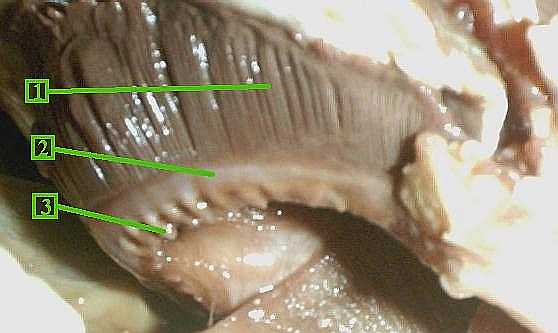 |
| 1. Gill Filaments |
| 2. Gill Arch |
| 3. Gill Rakers |
|
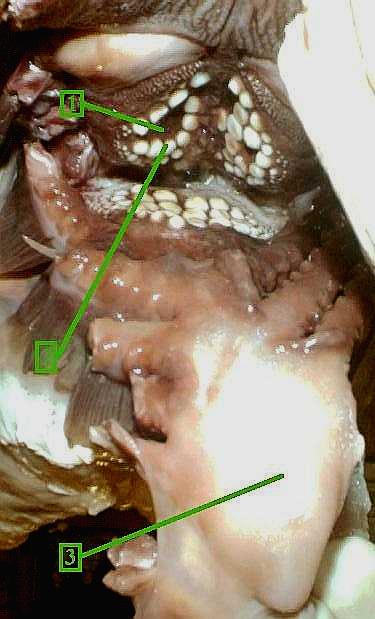
|
| 1. Modified
fifth pharyngeal arch |
| 2. Molariform
Teeth |
| 3. Tongue |
|

|
| 1. Pericardial
Cavity |
| 2. Transverse
Septum |
| 3. Heart |
| 4. Liver |
| 5. Pyloric
Caeca |
|
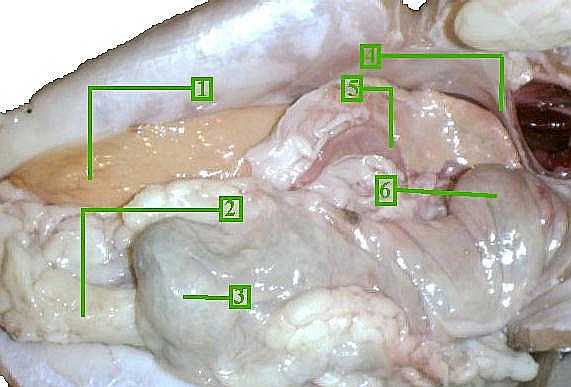 |
| 1. Ovary
(with eggs) |
| 2. Rectum |
| 3. Intestine |
| 4. Transverse
Septum |
| 5. Spleen |
| 6. Stomach |
|
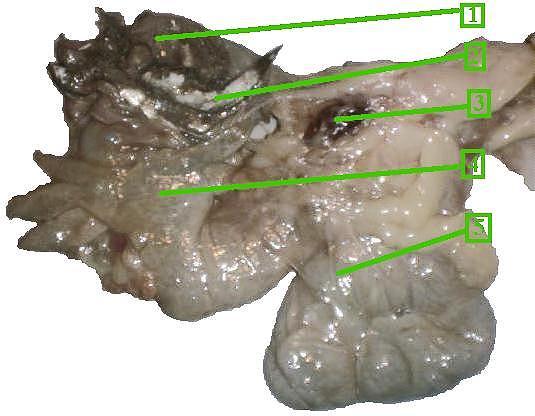
|
| 1. Stomach |
| 2. Stomach
Contents |
| 3. Spleen |
| 4. Pyloric
Caeca |
| 5. Intestine |
|
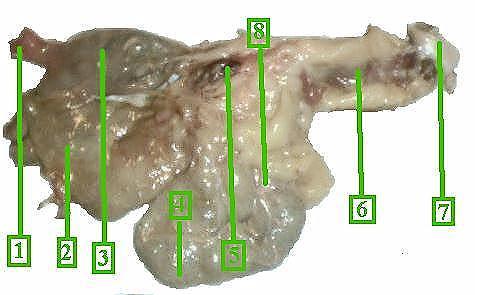
|
| 1. Esophagus |
| 2. Pyloric
Caeca |
| 3. Stomach |
| 4. Duodenum |
| 5. Spleen |
| 6. Rectum |
| 7. Anus |
| 8. Intestine |
|
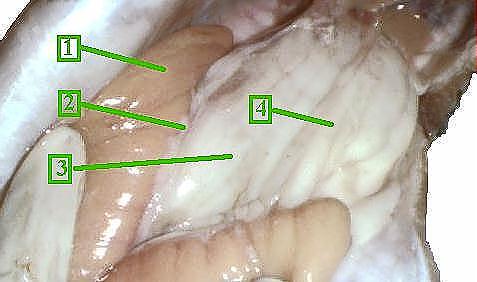
|
| 1. Ovary
(with Eggs) |
| 2. Kidney |
| 3. Air Bladder |
| 4. Oviduct |
|
The digestive
system of the freshwater drum includes an area in its pharynx that aids
in grinding or "chewing" its food. This area is actually a modified
fifth pharyngeal arch that has molariform teeth (Etnier and Starnes 1993).
The esophagus is very short in the freshwater drum. The esophagus is the
passageway for food entrance into the stomach where chemical breakdown
of food occurs. After leaving the stomach the food enters the pyloric caeca
which is the primary place that digestion and absorption of food occurs
in fishes (Kardong 2002). The food then enters the duodenum, then small
intestine, and then the large intestine where further digestion and water
absorption occurs. Last the digested food enters the rectum which is a
temporary holding area and then finally leaves the body of the fish through
the anus found in the cloaca.
Home
The Freshwater Drum Musculature
System
References
© 2002 Thomas H. Reynolds and Justin Kane







